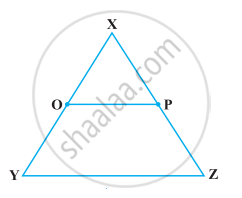Advertisements
Advertisements
प्रश्न
Euclid stated that all right angles are equal to each other in the form of ______.
पर्याय
an axiom
a definition
a postulate
a proof
उत्तर
Euclid stated that all right angles are equal to each other in the form of a postulate.
APPEARS IN
संबंधित प्रश्न
The following statement is true or false? Give reason for your answer.
Only one line can pass through a single point.
Give a definition of the following term. Are there other terms that need to be defined first? What are they, and how might you define them?
square
Consider two ‘postulates’ given below:-
- Given any two distinct points A and B, there exists a third point C which is in between A and B.
- There exist at least three points that are not on the same line.
Do these postulates contain any undefined terms? Are these postulates consistent? Do they follow from Euclid’s postulates? Explain.
In Indus Valley Civilisation (about 3000 B.C.), the bricks used for construction work were having dimensions in the ratio ______.
In ancient India, the shapes of altars used for household rituals were ______.
If a quantity B is a part of another quantity A, then A can be written as the sum of B and some third quantity C.
Solve the following question using appropriate Euclid’s axiom:
In the following figure, we have ∠1 = ∠3 and ∠2 = ∠4. Show that ∠A = ∠C.

Solve the following question using appropriate Euclid’s axiom:
In the following figure, if OX = `1/2` XY, PX = `1/2` XZ and OX = PX, show that XY = XZ.

Read the following two statements which are taken as axioms:
- If two lines intersect each other, then the vertically opposite angles are not equal.
- If a ray stands on a line, then the sum of two adjacent angles so formed is equal to 180°.
Is this system of axioms consistent? Justify your answer.
The following statement is true or false? Give reason for your answer.
There are an infinite number of lines which pass through two distinct points.
